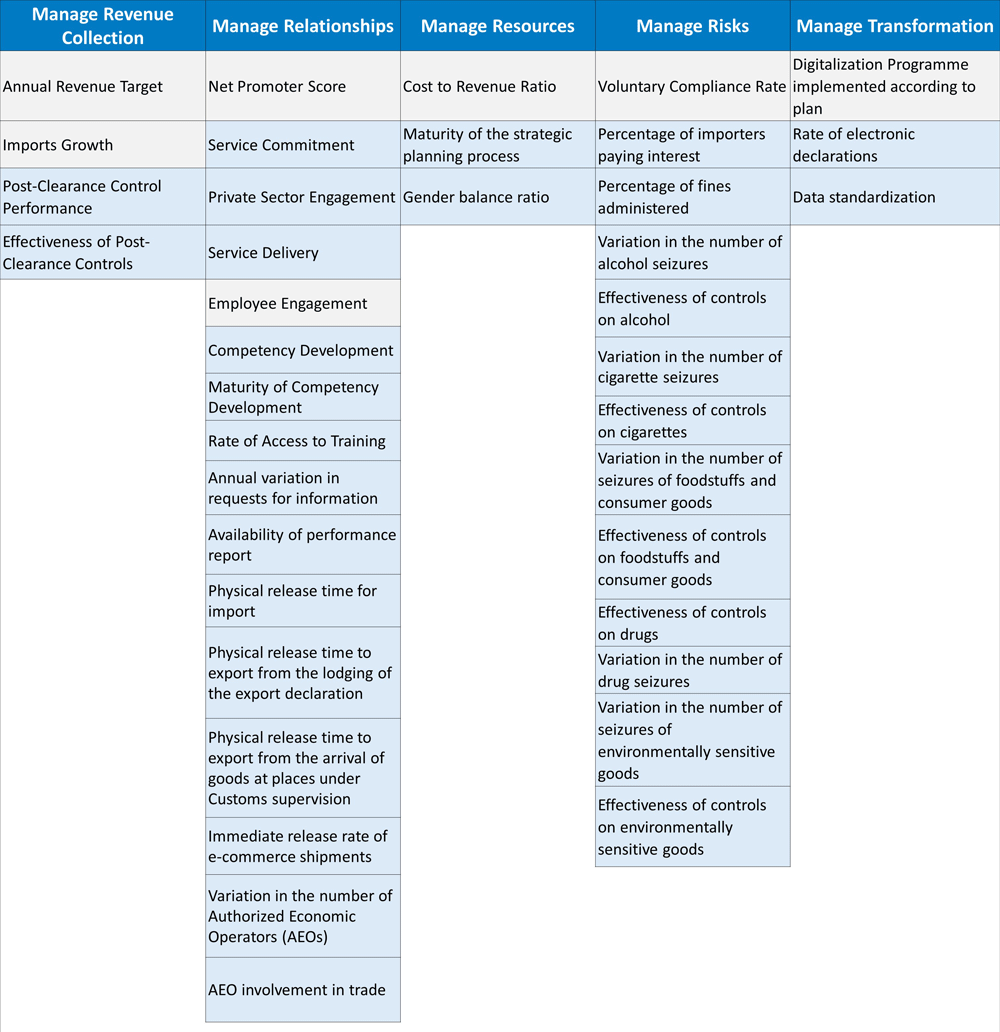Enhancing performance measurement systems using the WCO PMM: the experience of the Eswatini Revenue Service
24 June 2024
By Tanele Magongo, Manager Strategy, Eswatini Revenue ServiceIn 2023, when developing its 2024-2027 Strategic Plan and mapping out its vision for the future and how it was going to get there, the Eswatini Revenue Service (ERS) undertook an analysis of its environment, operations and processes. Four core strategic areas were consequently formulated in the Plan, each having specific priorities and objectives: Employee Experience, Digitalization, Trade Facilitation and Enforcement, and Client Experience and Education.
The ERS Performance Management System was examined in light of this decision. A key finding was that performance metrics within the ERS were largely defined by revenue collection against established targets, to the exclusion of other Customs missions, especially trade facilitation, societal protection and enforcement. The ERS needed to develop new Customs performance metrics to evaluate the relevance of the strategy adopted in the four areas and the way it had been implemented.
Aware that the WCO Performance Measurement Mechanism (PMM) had been finalized, the Service requested the technical assistance of the WCO Secretariat. Thanks to funding from the Swedish International Development Cooperation Agency (Sida), the WCO Secretariat organized a workshop in December 2023. Participants came from various ERS departments, such as Customs, Business Strategy and Development, Domestic Taxes, Information and Communication Technologies (ICT) and Human Resources (HR). They were all involved in strategic planning and in the drafting or implementation of reforms and operational procedures. During the workshop, they studied the WCO PMM, examining, in particular, domains which were not covered in the ERS Performance Management System, and started working on a Customs performance measurement tool capitalizing on the work done at the WCO.
A new system
The WCO PMM is structured around four areas:
- Trade Facilitation and Economic Competitiveness;
- Revenue Collection;
- Enforcement, Security and Protection of Society; and
- Organizational Development.
The first version of the WCO PMM (PMM v.1) includes a limited set of 23 expected outcomes, with the corresponding key performance indicators (KPIs) (51 in total). These KPIs relate to Customs administrative data. Many administrations already have a national performance measurement system in place and therefore just need to add those KPIs that are not yet covered by their system. Customs administrations can choose not to use a KPI if it cannot be measured due to national specificities.
The ERS measures performance at the organizational level using Core Operational Targets based on five key performance areas:
- Manage Revenue Collection;
- Manage Relationships (with internal and external stakeholders);
- Manage Resources;
- Manage Risks; and
- Manage Transformation.
Some 31 PMM KPIs were integrated into the ERS Performance Management System. For example, some of the PMM KPIs related to enforcement were added to the ERS Manage Risks area. These include KPIs such as “Variation in the number of drug seizures” and “Ratio of inspections carried out on the basis of risk profiles versus the total number of inspections”. PMM KPIs related to organizational development were also included in the Manage Resources area. These comprise the “Maturity of competency development” KPI, which measures the level of adoption of HR policy based on a competency approach, and the “Gender Balance Ratio” KPI. For a global view of the KPIs integrated in the ERS system, please see Table 1 below.

From tactical to operational level
The organizational scorecard for 2024/2025, which outlines the strategic targets for the financial year as defined in the Strategic Plan, integrates the KPIs considered as “strategic” in the sense that they measure outcomes. The following KPIs were added to the scorecard: “Physical Release Time for Import” and “Variation in AEOs”. It is worth noting that metrics related to strategic KPIs are made public through the ERS Annual Report.
The organizational-level scorecard is translated into departmental scorecards and then into divisional and individual scorecards, with specific KPIs linked to the overall organizational scorecard.
Managers and employees at lower levels of the hierarchy need to be aware of the strategic objectives of the organization and how they are expected to contribute towards the achievement of those targets. In 2024/25, performance contracts of ERS employees, particularly in Customs, will take into account the newly adopted KPIs from the WCO PMM, enabling the ERS to monitor employee performance based on clear agreed targets.
National Trade Facilitation Committee
Furthermore, the KPIs will be used to track implementation of the Roadmap 2024-2026 related to the World Trade Organization (WTO) Trade Facilitation Agreement (TFA), which is being overseen by the National Trade Facilitation Committee (NTFC). One of the goals in the roadmap is to “establish and maintain a performance management system to monitor and improve efficiency and effectiveness of trade facilitation initiatives/processes end of 2026”.
Challenges and opportunities
Quantitative process performance metrics are derived from various IT systems. Before deciding what metrics to use to track performance, it is therefore important to identify what information and data are currently available and can be extracted.
As the ERS was preparing the data related to the year 2022, issues were noted, especially in the measurement of some of the KPIs under the enforcement area. For example, it is currently difficult to extract data to measure commodity-specific KPIs such as “Variation in the number of alcohol seizures”. To obtain the information, one has to look into the various detention/seizure reports. Going forward, from 2024/25, the ERS will therefore adjust the dashboard reporting features to ensure that data on seizures per type of goods can be extracted.
Working on KPIs also shed light on process flaws. It enabled the ERS to identify those processes which needed to be reviewed. For example, in order to be able to measure the PMM KPI “Physical release time to export from the arrival of goods at places under Customs supervision”, the export process has to be reviewed, especially when it comes to the physical examination of goods.
The implementation of new KPIs will enable the ERS to identify areas where capacity needs to be built or strengthened, where resources need to be allocated, and where changes need to be made. In the long run, it will also enable the organization to build stronger evaluation capabilities, making evaluation the standard practice.
More information
WCO Performance Measurement Mechanism



